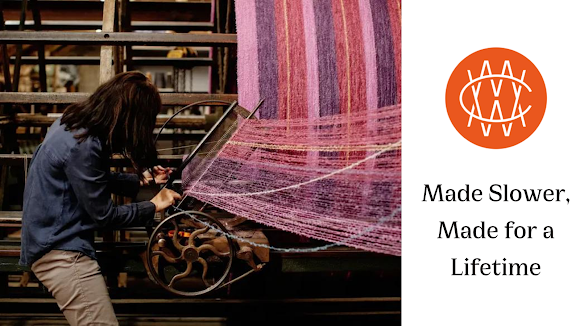A Comprehensive Guide to Wool Varieties in Ireland: Irish, Mohair, and Merino
Ireland has long been a popular destination for sheep farming due to its beautiful scenery and mild climate, and the wool industry there is strongly ingrained in the nation's cultural legacy. Not all wool in Ireland is as resilient and warm as Irish wool, which is particularly well-known for these qualities. Other types of wool, like Merino and Mohair wool, are also important in the textile industry. This article will examine the various varieties of wool available in Ireland, emphasizing their distinctive characteristics and the range of uses for which they are suitable.
1. Irish Wool
Characteristics and Qualities
Irish wool is arguably the most recognizable of all the wool types in Ireland due to its natural texture, warmth, and longevity. The majority of the wool is produced by indigenous sheep breeds that thrive in Ireland's untamed landscape and chilly, rainy climate, such as the Blackface Mountain, Kerry Hill, and Galway sheep.
Due to its coarser texture than some other varieties, Irish wool works especially well for outerwear and bulky clothing items like blankets, scarves, and sweaters. Excellent insulating qualities are attributed to its natural crimp, which traps air and provides warmth even in damp environments. Irish wool also has a high wear resistance and resilience, which makes it perfect for things that need to be used frequently.
Uses of Irish Wool
Irish wool has historically been used to make recognizable clothing items like Aran sweaters, which are renowned for their elaborate designs and durable materials. The wool's organic, earthy hues, which range from pale white to rich browns and grays, accentuate its rustic appeal while reflecting the Irish countryside.
Irish wool is used in home textiles like throws and cushions, where its warmth and texture lend charm and comfort to any space, in addition to apparel. Irish wool is a popular choice for handmade goods because it is authentic and connected to Ireland's heritage, which is valued by artisan and crafters.
2. Mohair Wool
Characteristics and Qualities
The Angora goat's fleece is used to make mohair wool, which is sometimes referred to as the "diamond fiber" due to its shine and luster. Even though mohair wool is not Indigenous to Ireland, it is produced thereby by skilled breeders who have brought Angora goats to the nation.
Mohair wool is highly sought-after in luxury textiles due to its natural sheen, softness, and exceptional light-reflecting properties. Mohair wool's smoothness and drape are partly attributed to its smooth and barely crimped fibers. Mohair is great for clothing and interior textiles because it is less likely to pill than some other types of wool and is very durable.
Breathability and moisture-wicking capabilities are two of Mohair wool's best features; these characteristics help control body temperature and make it comfortable to wear in a variety of weather conditions.
Uses of Mohair Wool
Because of its opulent characteristics, mohair wool is a popular material for suits, jackets, and evening wear in high fashion. Its remarkable dye-holding capacity makes it a preferred material for achieving vivid, deep hues in textiles.
Mohair wool is used in Ireland to create sophisticated, fashionable, and useful accessories like scarves and shawls. Because of its sheen and softness, it's also a popular material for home textiles like throws and decorative pillows, which give interior spaces a hint of refinement and coziness.
3. Merino Wool
Characteristics and Qualities
The world recognizes Merino wool, which comes from Merino sheep, for its extraordinary fineness, softness, and adaptability. Despite coming originally from Spain and subsequently being bred in Australia and New Zealand, Merino wool can also be found in Ireland, where local wool producers import and process the wool.
Merino wool has a smooth, soft texture that is kind to the skin because its fibers are far finer than those of traditional Irish wool. Merino wool is therefore a great material to use for undergarments, base layers, and other clothing that is worn close to the body. Merino wool is exceptionally robust and durable despite being soft, and it has a built-in elasticity that helps clothes hold their shape.
The remarkable property of Merino wool is its capacity to control temperature. Even in warmer weather, it is comfortable to wear because it retains its breathability and moisture-wicking qualities while offering warmth in cold weather. Because of its capacity to retain sweat and absorb moisture, Merino wool also has a built-in resistance to odors, making it a popular material for sportswear.
Uses of Merino Wool
Merino wool is highly prized in Ireland when it comes to high-performance outdoor apparel, like sportswear, socks, and base layers, where its capacity to control moisture and temperature is especially helpful. Additionally, it's used in fine knitwear, where its lightweight nature and softness make it perfect for garments like cardigans, scarves, and sweaters.
Merino wool blankets and bedding are also well-liked by those looking for the utmost in comfort; they offer a warm, breathable layer that aids in controlling body temperature during the night.
Conclusion
Ireland has a long history of producing wool, and there are many different kinds of wool, each with special characteristics and uses. Ireland's wool, valued for centuries for its warmth and durability, continues to be a symbol of the nation's cultural legacy. For those looking for something a little different, Mohair and Merino wool add options with their opulent softness and adaptability.
There is something for everyone in Ireland's wool selection, whether you are drawn to the smooth sheen of Mohair, the gentle elegance of Merino, or the rugged charm of Irish wool. Every variety of wool has a distinct character that adds value to the clothing and textiles we treasure, and they are all interwoven into the fabric of Ireland's textile industry.
.png)
.png)

Comments
Post a Comment